Breadth First Search (BFS) for a graph is a traversing or searching algorithm in tree/graph data structure. It starts at a given vertex(any arbitrary vertex) and explores all the connected vertex and after that moves to the nearest vertex and explores all the unexplored nodes and takes care that no vertex/nodes visited twice. To find out the BFS of a given graph starting from a particular node we need a Queue data structure to find out. Let’s move to the example for a quick understanding of the
Table of Contents
Breadth First Search (BFS) traversal and its implementation
When we add connected nodes to a particular node then we also add that node to the result and pop that from the queue for more understanding just see the below step by step procedure:
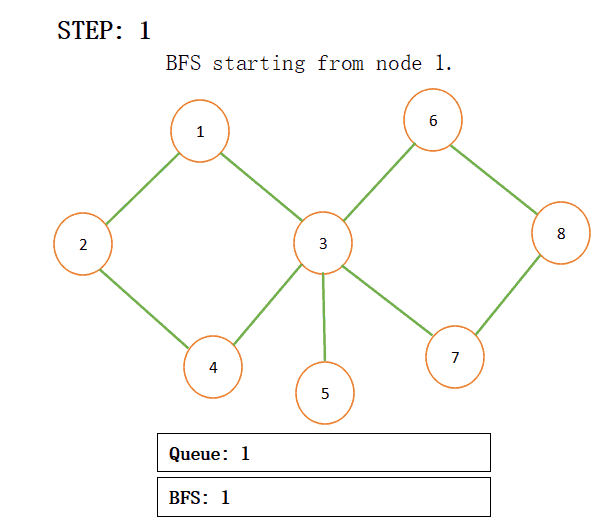
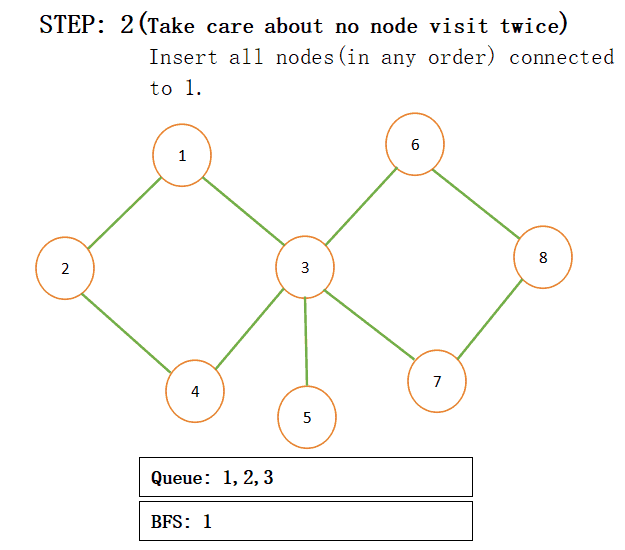
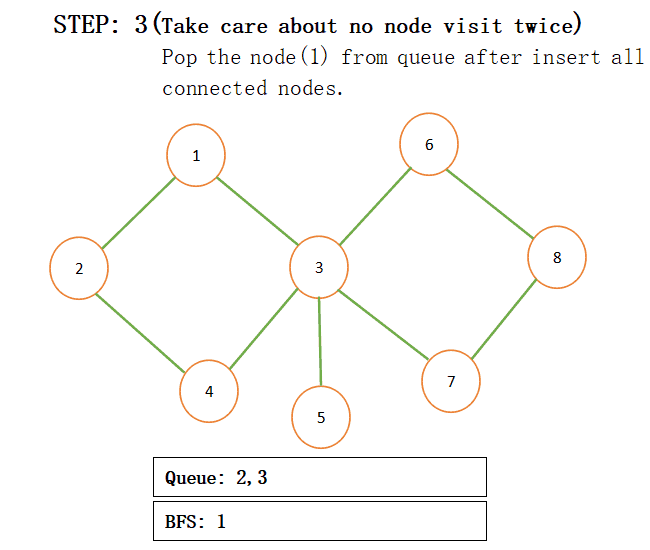
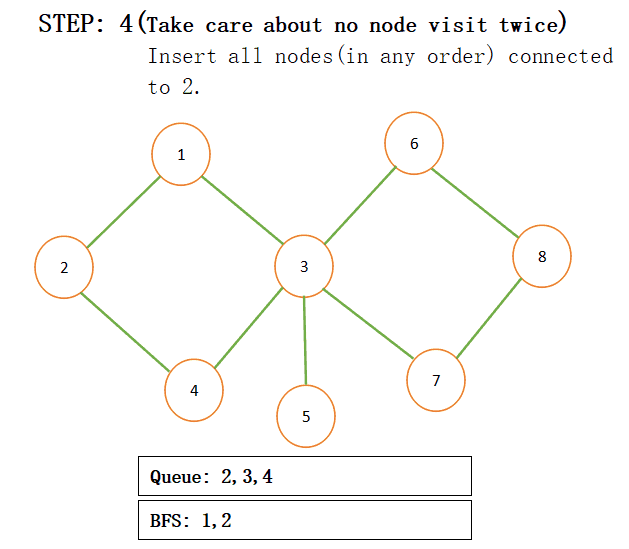
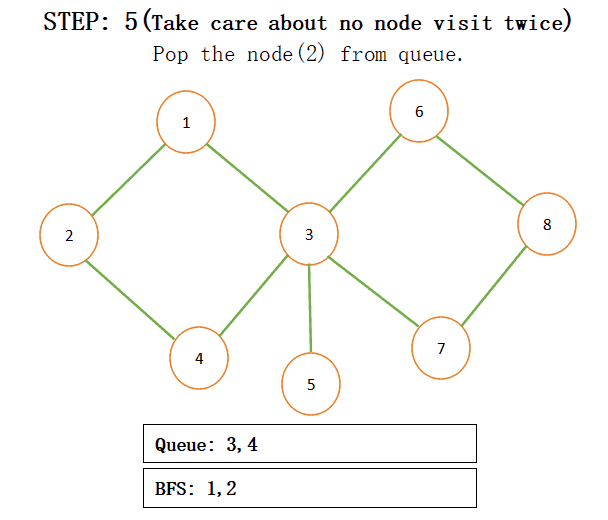
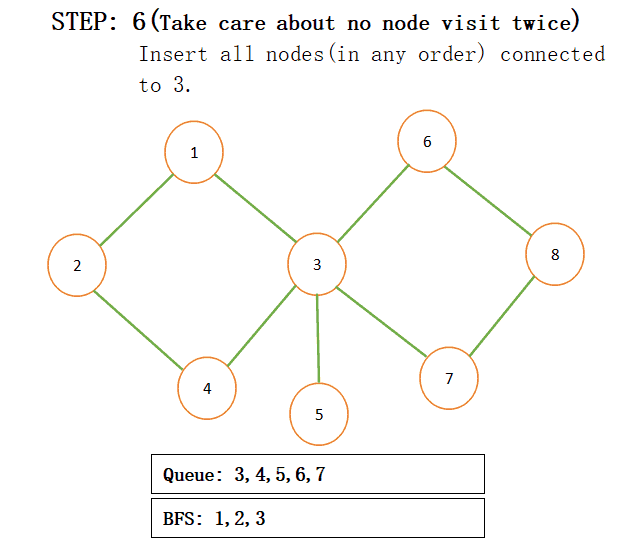
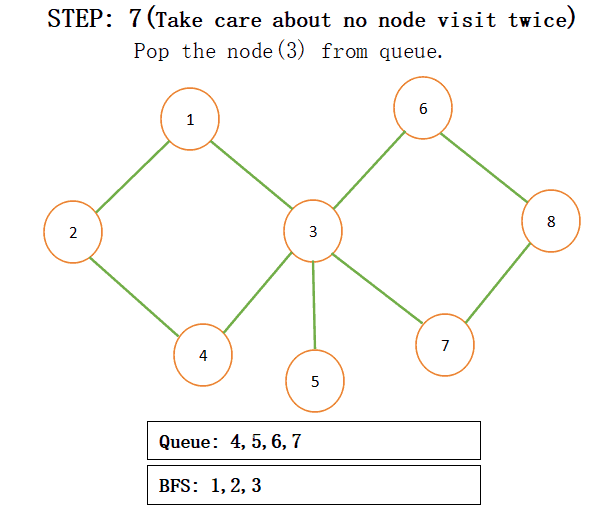
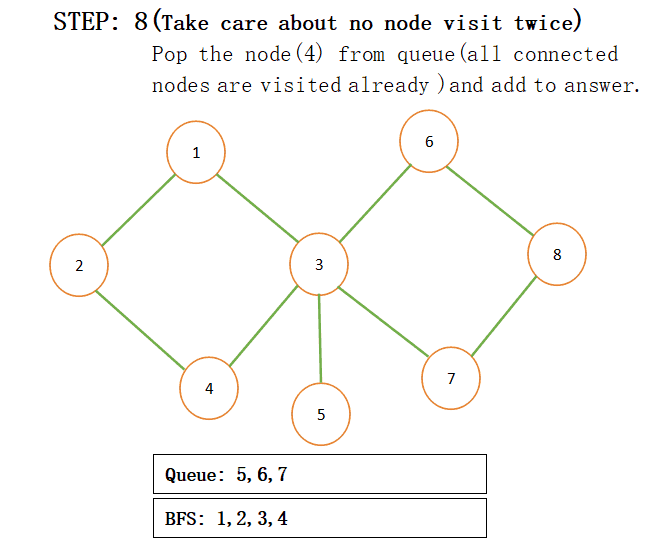
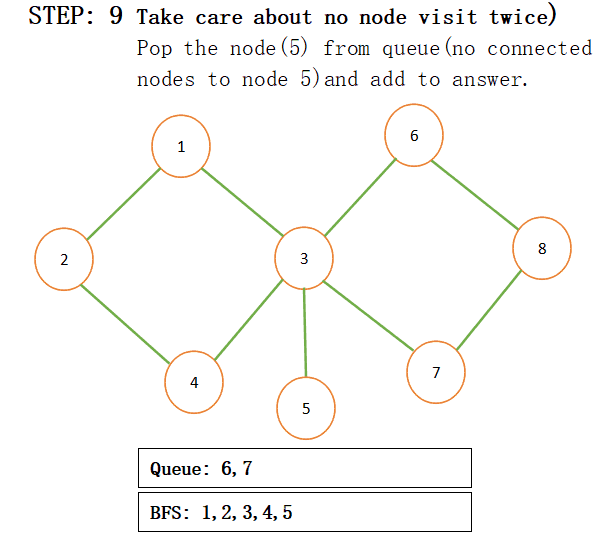





NOTE:
- There is more than one BFS possible for a particular graph(like the above graph ). Like some other possible BFS for the above graph are : (1,3,2,5,6,7,4,8) , (1,3,2,7,6,5,4,8), (1,3,2,6,7,5,4,8)….
- BFS is level order traversal.
Implementation of Breadth First Search (BFS)
C++ Code for Breadth First Search (BFS)
/*C++ Implementation of BFS of a given graph using STL*/
#include <bits/stdc++.h>
using namespace std;
int main() {
int nodes,edges;
/*take input*/
cin>>nodes>>edges;
vector<int> v[nodes+1];
bool visited[nodes+1];
memset(visited,false,sizeof(visited));
/*Make graph using vector*/
for(int i=0;i<edges;i++)
{
int x,y;
cin>>x>>y;
/*add edge between x and y*/
v[x].push_back(y);
/*add edge between y and x*/
v[y].push_back(x);
}
int start;
/*Take input node at which the BFS starts*/
cin>>start;
queue<int> q_calc;
q_calc.push(start);
visited[start]=true;
vector<int> bfs;
while(!q_calc.empty())
{
/*pop the element from queue*/
int pop_elem=q_calc.front();
/*update the answer*/
bfs.push_back(pop_elem);
q_calc.pop();
/*add all the connected nodes with pop_elem into queue*/
for(int i=0;i<v[pop_elem].size();i++)
{
/*if we visit already then we can't add it into queue*/
if(!visited[v[pop_elem][i]])
{
visited[v[pop_elem][i]]=true;
q_calc.push(v[pop_elem][i]);
}
}
}
/*print the BFS for given graph at starting with given node*/
for(int i=0;i<nodes;i++)
{
cout<<bfs[i]<<" ";
}
cout<<"\n";
return 0;
}Input: 8 9 1 2 1 3 2 4 3 4 3 5 3 6 3 7 6 8 7 8 1
Output: 1 2 3 4 5 6 7 8
Time Complexity of BFS
O(V+E) where V denotes the number of vertices and E denotes the number of edges.